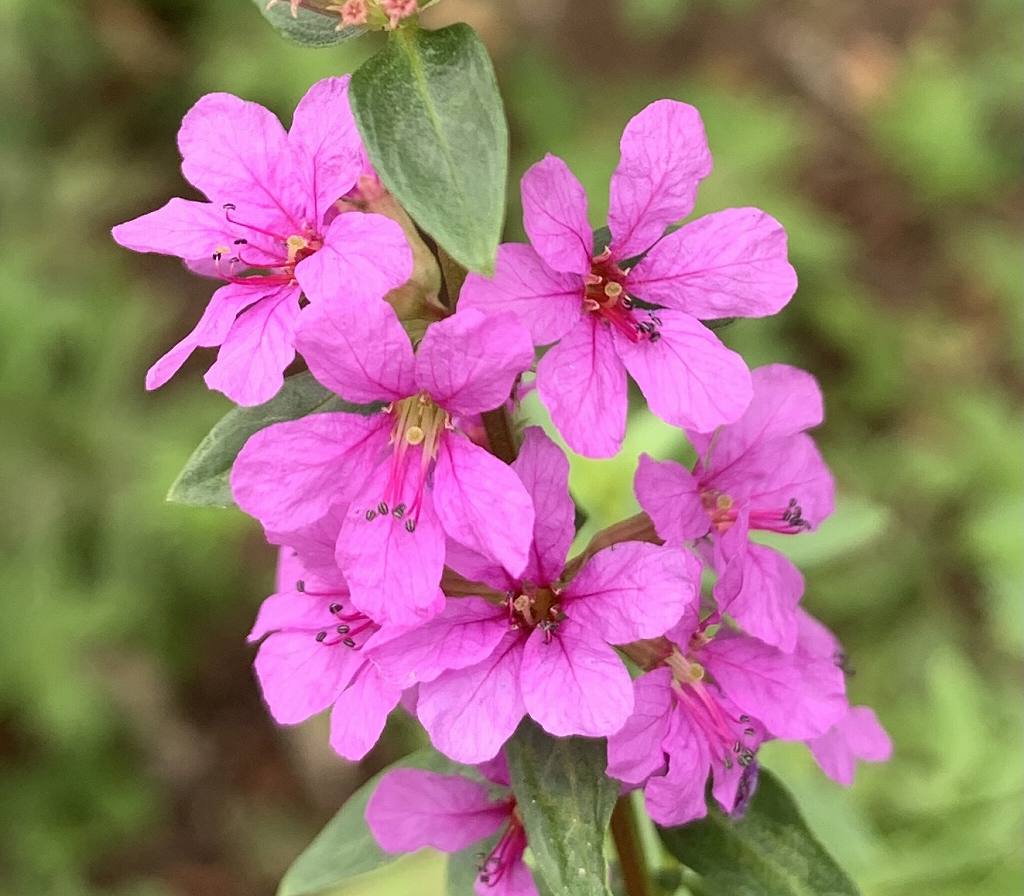ミソハギの名前の由来は、花が萩に似ていて禊に用いるから。花茎を手折って花穂を水に濡らし、その雫を玄関や供物に振りかけて清めます。
The origin of the name of Loosestrife is that the flower resembles Hagi and is used for Misogi. Fold the flower stalks to wet the spikes with water, and sprinkle the drops on the entrance or offering to cleanse them.
【仮名】ミソハギ, ボンバナ, ショウリョウバナ, ミズカケソウ, センクツサイ
【和名】禊萩, 盆花, 精霊花, 水掛草, 千屈菜
【英名】Loosestrife, Lythrum anceps
【学名】Lythrum anceps
【誕生】09/ 06, 10/ 11
【開花】07, 08, 09月
【花色】Purple



ミソハギ
ミソハギの分布
ミソハギはミソハギ科の多年草です。分布は北海道から本州、四国、九州、朝鮮半島まで。湿地を好み、田んぼの畦畔などに生えています。小さな花が葉の付け根で咲いて花弁は6枚。訪花昆虫が花粉を受け渡すときに自家受粉しないよう、花により雄しべの長さが異なる異形花です。
ミソハギと神事
ミソハギの名前は神事に由来します。花がハギに似ていて、ミソギに用いるから「禊萩」。花茎を手折って花穂を水に濡らし、その雫を玄関や供物に振りかけて清めます。その所作から別名「水掛草」。また、よく水路に生えているから「溝萩」で、それが転じたともいわれています。
ミソハギと仏事
ミソハギは「盆花」「精霊花」のように、仏事にちなんだ別名もあります。ちょうどお盆の頃に開花し、神事と同じように水を含ませてお清めに用い、お餓鬼様の渇きも癒すから。よくお墓や仏壇に供えられることから、花言葉も「愛の悲しみ」「純真な愛情」「悲哀」「慈悲」です。
ミソハギの近縁種
ミソハギは「千屈菜」とも呼ばれる秋の季語で、下痢止めなどに用いられた民間薬。しかし、漢方で生薬として用いられる千屈菜は「エゾミソハギ」のことです。ミソハギよりも大型で毛の多い近縁種。ユーラシア大陸から北アフリカまで広く分布し、世界の侵略的外来種の一つです。
Loosestrife
Loosestrife is a perennial plant of the Lythraceae family. Distribution is from Hokkaido to Honshu, Shikoku, Kyushu, and the Korean Peninsula. It likes wetlands and grow on the ridges of rice fields. Small flowers bloom at the base of the leaves and have 6 petals. It is a variant flower with different stamen lengths depending on the flower so that visiting insects do not self-pollinate when handing over pollen.
The name of the Loosestrife comes from the Shinto ritual. The flower resembles a hagi, and it is used for loosestrife, so it is called “Misohagi”. Fold the flower stalks to wet the spikes with water, and sprinkle the drops on the entrance or offering to cleanse them. Also known as “Mizukakesou” from that work. Also, because it often grows in waterways, it is said that it turned from “Mizohagi”.
Loosestrife is also known as a Buddhist ritual, such as “Bonbana” and “Shoryobana”. It blooms just around the time of Obon, and it is used for purification by soaking it in water like a Shinto ritual, and it quenches the thirst of hungry demons. Since it is often offered to graves and altars, the flower language is also “sadness of love,” “innocent love,” “sorrow,” and “mercy.”
Loosestrife is an autumn season word, also known as “Senkutsusai,” and is a folk medicine used to prevent diarrhea. However, the Senkutsusai used as a crude drug in Chinese medicine is “Purple Loosestrife”. A closely related species that is larger and has more hair than Loosestrife. Widely distributed from the Eurasian continent to North Africa, it is one of the invasive alien species in the world.


